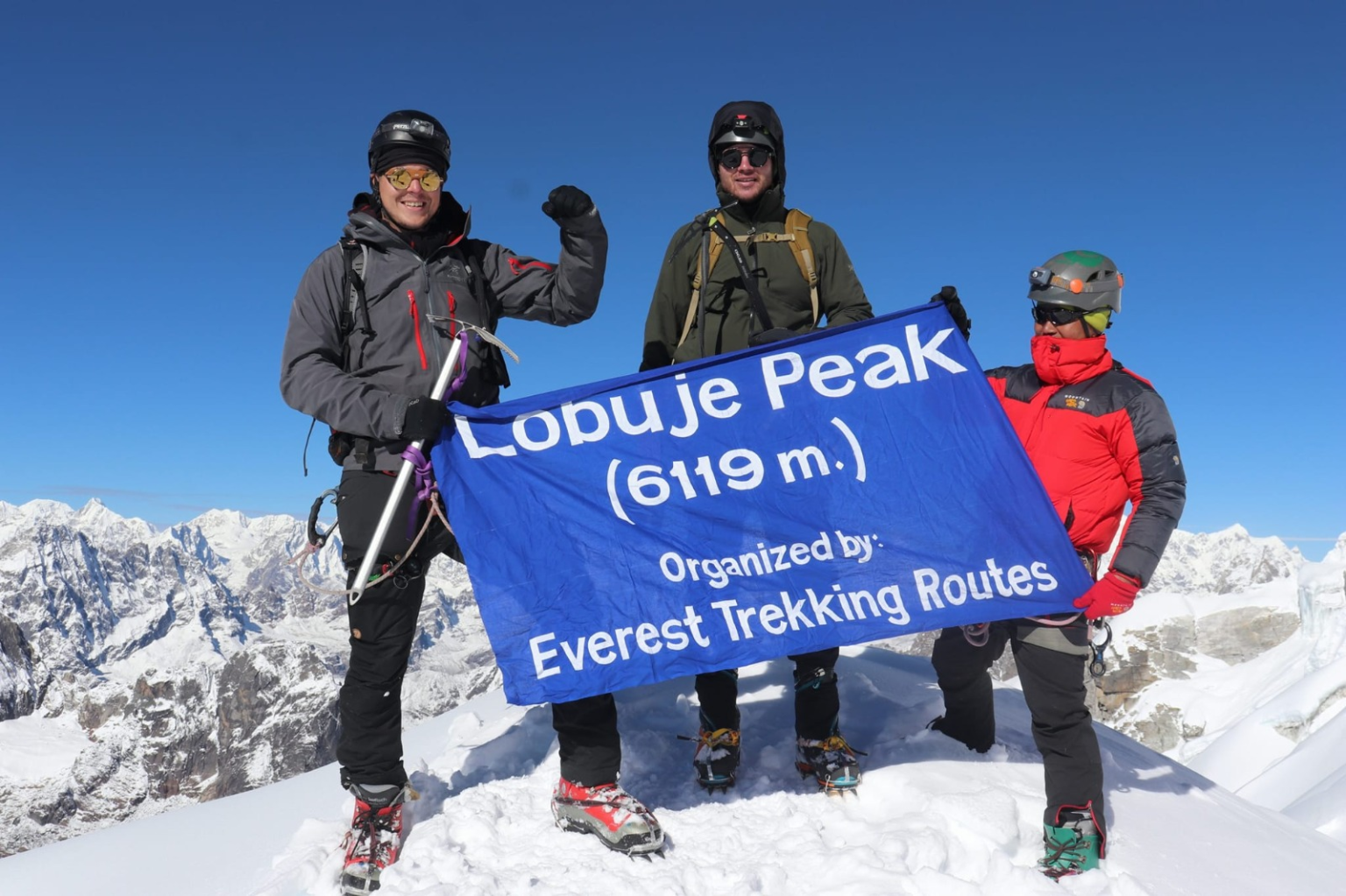Nepal, a land crowned by the mighty Himalayas, offers some of the most thrilling and scenic climbing experiences in the world. Among its many snow-clad giants, three peaks stand out for their accessibility, beauty, and challenge: Island Peak (Imja Tse), Mera Peak, and Lobuche Peak. Each of these mountains tells a different story, inviting climbers to step into the heart of the high Himalayas where nature’s raw grandeur meets spiritual serenity.
Island Peak: The Jewel of the Khumbu
Rising to 6,189 meters (20,305 ft), Island Peak, locally known as Imja Tse, is nestled in the Khumbu region and is often considered a natural extension to the classic Everest Base Camp trek. Named “Island” by Eric Shipton in 1953 because of its resemblance to an island in a sea of ice, this stunning peak is a favorite among climbers aiming for their first Himalayan summit.
The approach to Island Peak takes you through the vibrant Sherpa villages of Namche Bazaar, Tengboche, and Dingboche, immersing you in centuries-old Buddhist culture and awe-inspiring panoramas of Everest, Lhotse, and Ama Dablam. The final summit push includes a steep snow headwall and a narrow ridge, demanding basic mountaineering skills and physical endurance.
What makes Island Peak extraordinary is not just the climb but the setting—surrounded by towering glaciers and crystalline ridgelines that shine like silver under the sun. For many adventurers, standing atop Island Peak is not just a physical conquest but a spiritual awakening.
Mera Peak: The Highest of the Trekking Peaks
At 6,476 meters (21,247 ft), Mera Peak is the tallest of Nepal’s designated trekking peaks and offers perhaps the most panoramic view in the entire Himalayas. On a clear day, climbers are rewarded with a breathtaking 360-degree view of five of the world’s tallest mountains: Everest, Lhotse, Makalu, Cho Oyu, and Kangchenjunga.
Unlike Island Peak, Mera Peak’s standard route is less technical but physically demanding due to its altitude and glaciated terrain. The journey begins in Lukla and heads south through the unspoiled Hinku Valley, passing dense rhododendron forests, high alpine pastures, and ancient yak herder settlements.
What sets Mera apart is its wilderness. The trail is remote and serene, far from the busy Everest routes. Climbers often feel as though they’re walking through a dreamscape of ice and sky. Though the final ascent requires roped glacier travel, the climb is manageable for well-prepared trekkers with basic mountaineering experience.
Mera Peak is ideal for those seeking solitude, high-altitude challenge, and unmatched Himalayan views without extreme technical hurdles.
Lobuche Peak: The Technical Beauty
Lobuche Peak, standing at 6,119 meters (20,075 ft), is divided into two main summits: Lobuche East (the trekking peak) and Lobuche West (a more technical expedition peak). Lobuche East offers climbers a chance to test their alpine skills on a more technical route compared to Island or Mera.
The climb to Lobuche East requires traversing steep snowfields, icy ridges, and rock slabs, making it a rewarding adventure for those with some previous climbing experience. The route challenges you both mentally and physically, but the view from the summit—dominated by Everest, Lhotse, Nuptse, and Pumori—is a majestic reward for your grit and determination.
Lobuche is often used as acclimatization for Everest expeditions, but in its own right, it offers one of the most exhilarating climbs among Nepal’s trekking peaks. Its base camp lies close to the Everest trail, allowing climbers to experience the vibrant energy of the Khumbu region before heading into a more remote, icy world.
Choosing Your Peak: A Matter of Soul and Summit
Each of these peaks offers a unique flavor of adventure. Island Peak is perfect for trekkers looking to step into mountaineering with a taste of technical climbing. Mera Peak is for those who seek solitude and grand, sweeping views from the highest non-technical summit in Nepal. Lobuche Peak calls to climbers yearning for a challenge—an ascent that tests both your endurance and your technical prowess.
Whichever peak you choose, the journey itself will change you. You’ll cross swinging suspension bridges, hear prayer flags fluttering in high-altitude wind, and share stories with fellow climbers under star-laden skies. You’ll taste yak butter tea, walk beneath glacier-carved cliffs, and feel the heartbeat of the Himalayas in your chest.
Conclusion: Summits of the Soul
To stand atop Island, Mera, or Lobuche is to touch the edge of heaven, where the air is thin but the spirit soars. These are not just mountains; they are cathedrals of ice and stone where dreams ascend with every step. The silence up there speaks louder than words, telling you that life is not measured by time but by the peaks you dare to climb.
The Himalayas do not just test your limits—they redefine them. In those rare moments on the summit, as the morning light dances on frozen ridges and prayer flags whip in the wind, you’ll understand something deeper: you haven’t conquered the mountain—you’ve discovered yourself.
Contact Details
———————
Company address: Everest Trekking Routes Pvt. Ltd.
16 Khumbu, Nayabazaar, Kathmandu, Nepal
Mobile : +977-9843467921 (Rabin)
Email: [email protected]
URL:- www.everesttrekkingroutes.com


